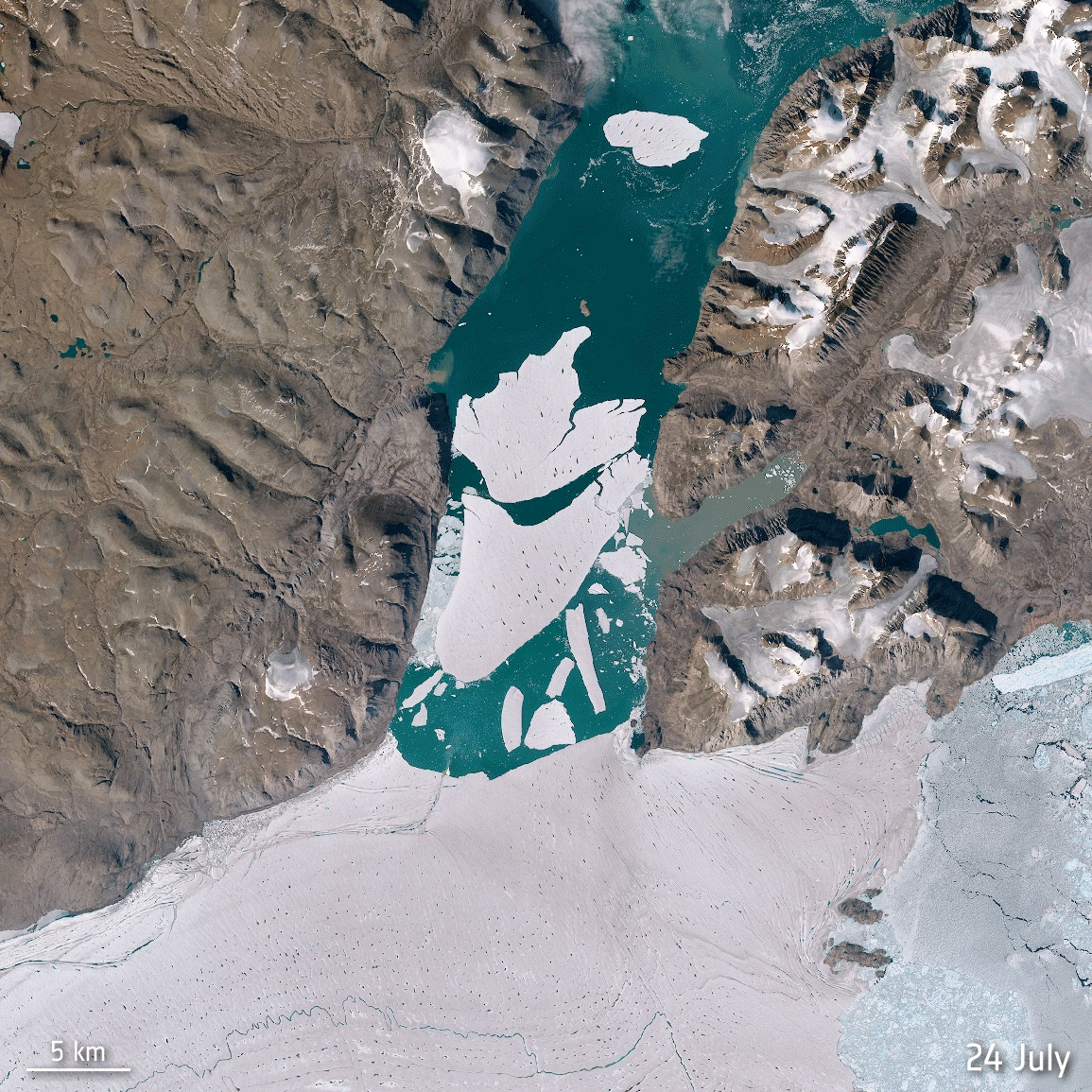Huge ice block breaks off Arctic’s largest remaining ice shelf
Its collapse could make way for further ice loss.
Scientists on Monday said the vast and ancient ice sheet sitting atop Greenland had sloughed off a 113-square-kilometer (approx. 44-square-mile) chunk of ice last month. The section of the Spalte Glacier at the northwest corner of the Arctic island had been cracking for several years before finally breaking free on Aug. 27, clearing the way for inland ice loss to the sea, the Geological Survey of Denmark and Greenland reported.
[Canada’s last fully intact Arctic ice shelf collapses]
With climate change driving up Arctic temperatures, the once-solid sea ice cover has been shrinking to stark, new lows in recent years. This year’s minimum, still a few days from being declared, is expected to be the second-lowest expanse in four decades of record-keeping. The record low of 3.41 million square kilometers — reached in September 2012 after a late-season cyclonic storm broke up the remaining ice — is not much below what we see today.

In fact, the long-frozen region is already shifting to an entirely new climate regime, marked by the escalating trends in ice melt, temperature rise and rainfall days, according to new research published Monday in the journal Nature Climate Change.
[Arctic sea ice melt marks a new polar climate regime]
Sea ice coverage minimums, in particular, are now about 31 percent lower than in the decade after 1979, when satellite observations began. The ice has also lost about two-thirds of its bulk, as much of the thicker ice layer built up over years has long since melted away. The current ice regime actually began about two decades ago, the study found.

This vanishing of sea ice also contributes to the region’s warming, as the icy white expanse is replaced by patches of dark water that absorb solar radiation rather than reflecting it back out of the atmosphere. The process, referred to as Arctic amplification, helps to explain why the Arctic has warmed more than twice as fast as the rest of the world over the last four decades.
Production by Matt Stock and Natalie Thomas.